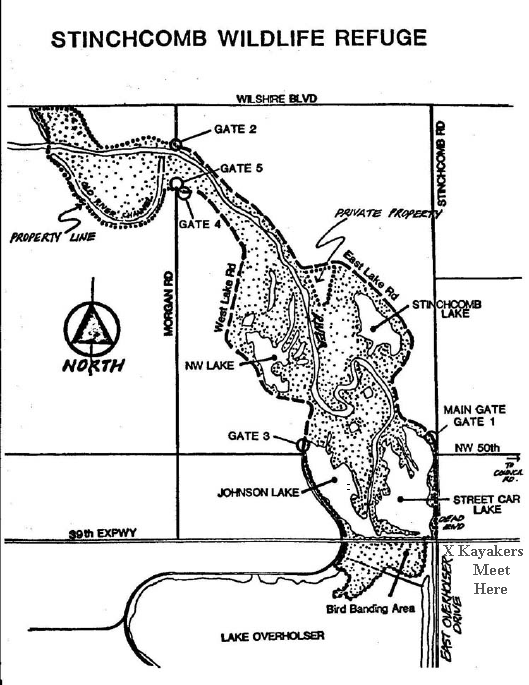LOCATION: Stinchcomb Wildlife Refuge
From the 1986 edition of A Guide to Birding in Oklahoma published by the Tulsa Audubon Society, and partially updated in 2007.
This marshland and the adjoining heavily wooded swamp along the North Canadian River for a little over 2 miles have been designated as a wildlife refuge. It is available for hikers and at times by permit for entry by cars along paralleling dirt roads. The refuge lies just north of Lake Overholser, north of US 66.
The primary ways to enjoy the refuge are by foot, mountain bike and boat. Several trails suitable for hiking run through the refuge linking four small lakes to the river. Entrances to the trails are from NW 50th on the east side of the refuge and County Line and Morgan Roads on the west side.
Nesting Prothonotary Warblers and Wood Ducks are found in the several ponds along the river roads. Indigo Buntings, American Goldfinches, smaller woodpeckers, and Carolina Wrens are among the small birds present. Late summer concentrations of Double-crested Cormorants may number in the hundreds. Mississippi Kites, Swainson’s and Red-tailed Hawks use the area as well as Great Horned, Barred, and Eastern Screech-Owls.
When water levels are low, wading birds including White-faced Ibis and rarely such southern visitors as the White Ibis. During the periods of migration warblers, kinglets, and smaller flycatchers are abundant. Fall weather brings the wintering sparrows: Song, Swamp, Lincoln’s, White-throated, White-crowned, Harris’s and Fox.
Stinchcomb Wildlife Refuge is managed by the Oklahoma City Water Trust. The four ‘lakes’ on the refuge serve as sedimentation basins for the NW Oklahoma City water system. Water from the North Canadian River (which becomes the Oklahoma River as it flows through downtown Oklahoma City) is backed up from Lake Overholser (just to the South) into the refuge, where the sediment drops out prior to diverting it to storage in Lake Hefner (to the NW). 
